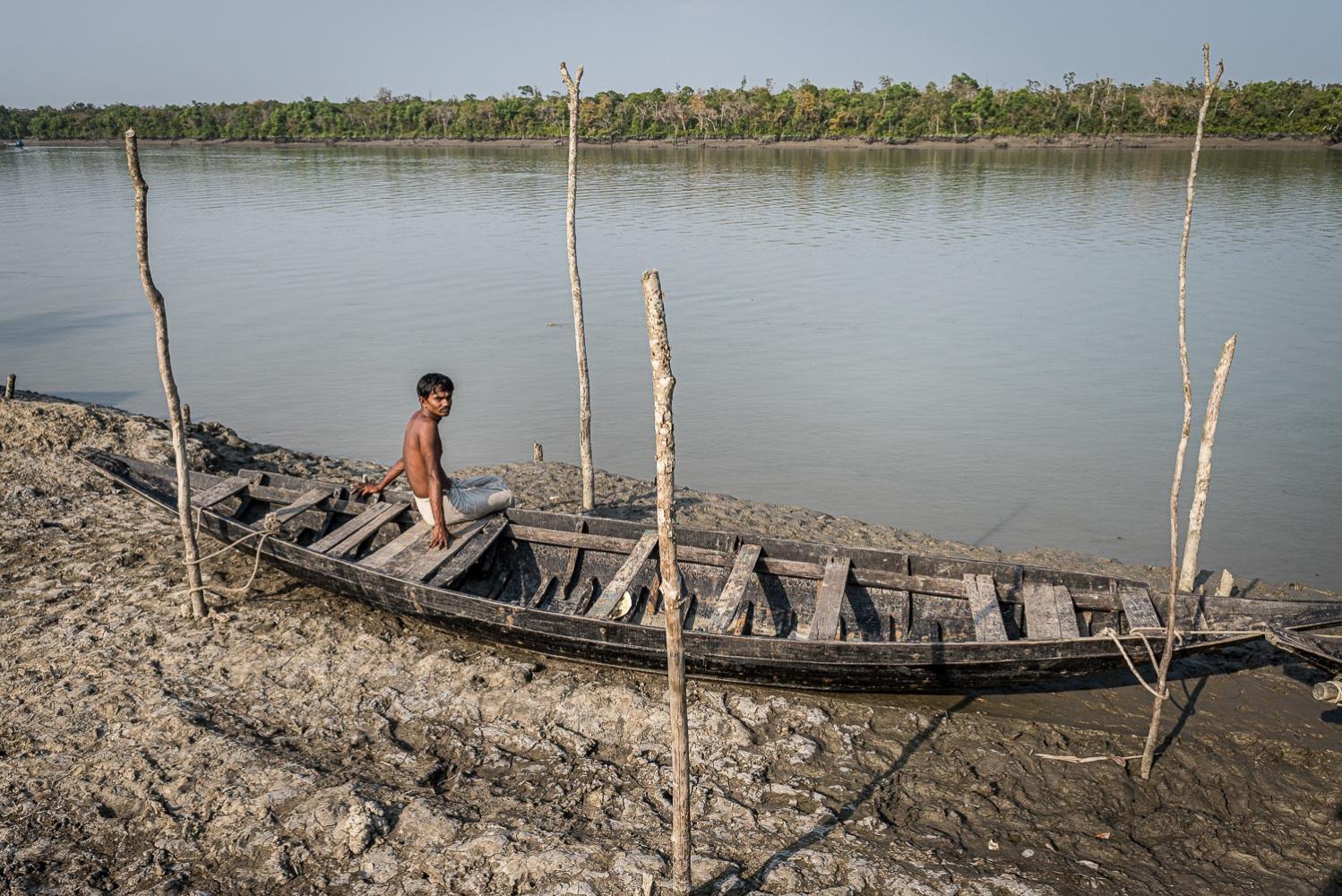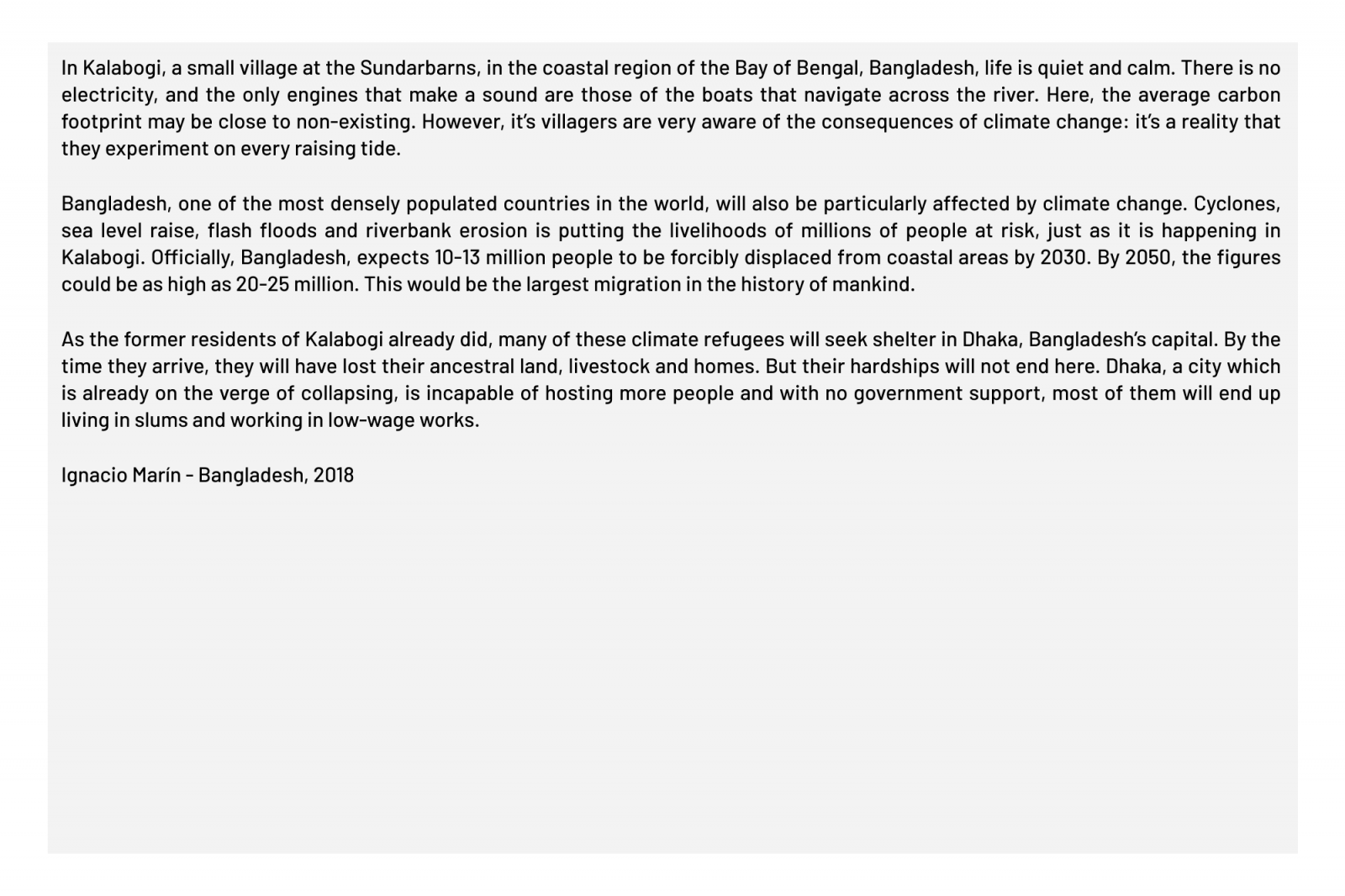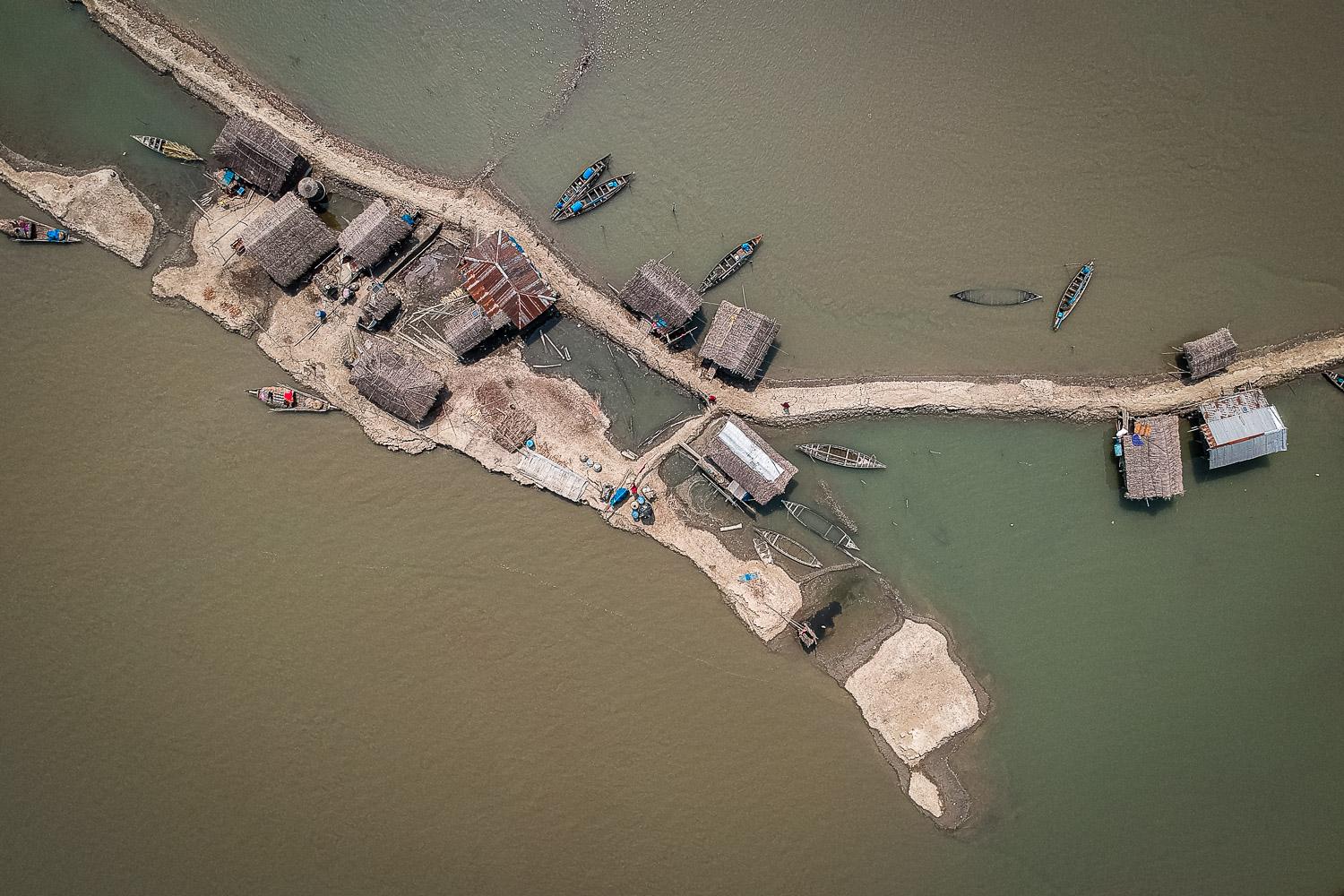Public Story
A drowning land
A DROWNING LAND
In Kalabogi, a small village at the Sundarbarns, in the coastal region of the Bay of Bengal, Bangladesh, life is quiet and calm. There is no electricity, and the only engines that make a sound are those of the boats that navigate across the river. Here, the average carbon footprint may be close to non-existing. However, it’s villagers are very aware of the consequences of climate change: it’s a reality that they experiment on every raising tide.
Bangladesh, one of the most densely populated countries in the world, will also be particularly affected by climate change. Cyclones, sea level raise, flash floods and riverbank erosion is putting the livelihoods of millions of people at risk, just as it is happening in Kalabogi. Officially, Bangladesh, expects 10-13 million people to be forcibly displaced from coastal areas by 2030. By 2050, the figures could be as high as 20-25 million. This would be the largest migration in the history of mankind.
As the former residents of Kalabogi already did, many of these climate refugees will seek shelter in Dhaka, Bangladesh’s capital. By the time they arrive, they will have lost their ancestral land, livestock and homes. But their hardships will not end here. Dhaka, a city which is already on the verge of collapsing, is incapable of hosting more people and with no government support, most of them will end up living in slums and working in low-wage works.
Bangladesh, one of the most densely populated countries in the world, will also be particularly affected by climate change. Cyclones, sea level raise, flash floods and riverbank erosion is putting the livelihoods of millions of people at risk, just as it is happening in Kalabogi. Officially, Bangladesh, expects 10-13 million people to be forcibly displaced from coastal areas by 2030. By 2050, the figures could be as high as 20-25 million. This would be the largest migration in the history of mankind.
As the former residents of Kalabogi already did, many of these climate refugees will seek shelter in Dhaka, Bangladesh’s capital. By the time they arrive, they will have lost their ancestral land, livestock and homes. But their hardships will not end here. Dhaka, a city which is already on the verge of collapsing, is incapable of hosting more people and with no government support, most of them will end up living in slums and working in low-wage works.
. . .
Sundarbarns / Dhaka, Bangladesh
March 2018
© Ignacio Marin





























